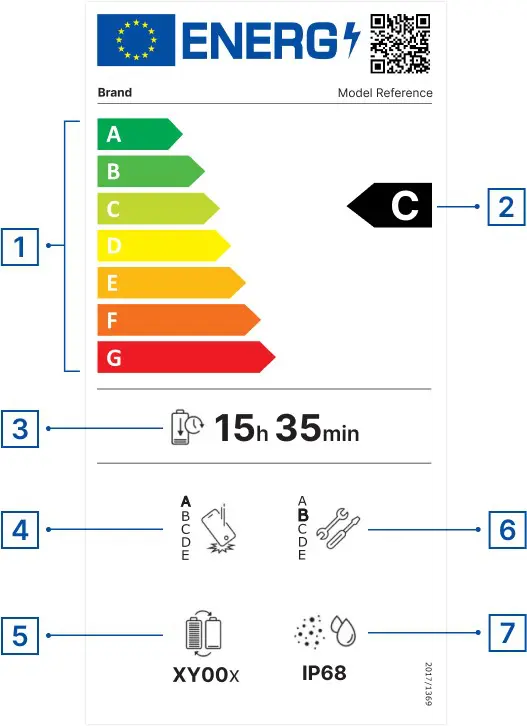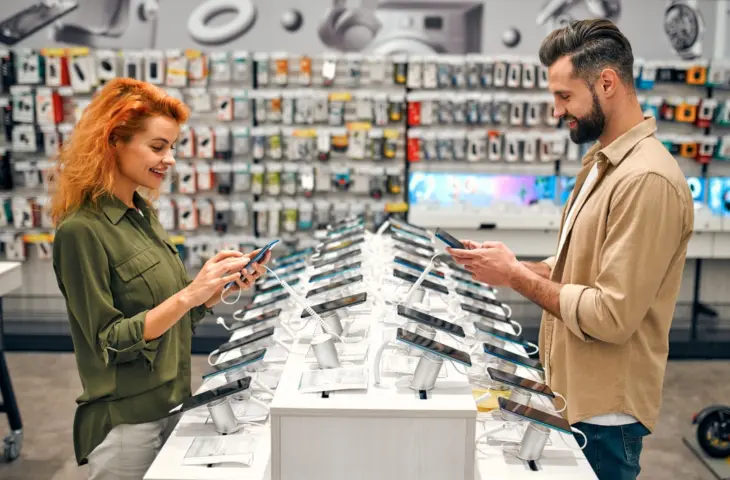Since recently, you can purchase a new smartphone with eco-vouchers. However, this only applies to a select number of models that receive the highest energy label.
Do you still have eco-vouchers that need to be used urgently? Eco-vouchers fall under the extra-legal benefits that many employers, although not obligated, grant to their staff. While meal vouchers are intended for grocery shopping, eco-vouchers can be used to purchase sustainable and environmentally friendly products.
This also includes electronic products such as refrigerators, washing machines, etc., provided they have a high energy label (A or B, depending on the product). With the new European regulations for smartphones and tablets, it is now also possible to purchase these devices with eco-vouchers.
European Labels
In June, the European Union introduced new regulations for smartphone and tablet manufacturers. The aim is to improve the quality and lifespan of electronic devices and to communicate more transparently about this to consumers. Part of the legislation is an “ecolabel” that manufacturers are required to place on new devices.

We were already familiar with such labels for electronic devices, but the label for smartphones and tablets will contain much more information than just energy consumption. The label also gives a device a score on drop and scratch resistance, repairability, and battery life. Using the label, you can compare the build quality of devices.
Buying a Smartphone with Eco-Vouchers
The new European legislation is especially good news for those who receive eco-vouchers from their employer. The National Labor Council recently decided to expand the list of products covered by the regulation in line with European legislation. From now on, you can also purchase a new smartphone or tablet with eco-vouchers.
However, this only applies to devices that receive the highest energy label “A”. Repairability or durability is not applicable for eco-vouchers.
Which Devices Can You Buy?
Determining exactly which devices fall under this category requires a bit of research. The European Union makes this easier with a public product register. Note: devices are identified here by their international GTIN number.
With this tool, you can rank all labeled smartphones and tablets based on energy efficiency, robustness, and repairability to compare devices with each other. Most recent models from well-known brands nowadays achieve an A for energy consumption, as do those from smaller manufacturers that might not immediately ring a bell.
The range of energy-efficient smartphones is therefore extensive. That doesn’t make every smartphone equally sustainable. Some models from HMD, Oukitel, and Fairphone receive an A for energy efficiency, repairability, and drop resistance.
No A for Apple
Apple’s iPhones, on the other hand, don’t receive any A ratings. Notably, Apple has decided to lower the energy rating itself, as a form of protest against the test procedures imposed by the EU.
Apple makes a point of contesting and criticizing European legislation. In a paper of forty pages, it now criticizes the ecolabels. Apple also scores no higher than a C on repairability and drop resistance, and it barely meets the standard for the number of cycles the battery lasts.
read also
iPhone Battery Twice as Bad as Samsung: which Manufacturer Performs Best?
For iPads, the scores are even more dramatic. Apple’s tablets receive only an E or even the worst label G for energy. The drop resistance of iPads is also poor according to European standards.
Limited Choice for Tablets
In general, the labels are much lower for tablets than for smartphones. If you want to buy a tablet with eco-vouchers, you would now be limited to three models from the Chinese brand Shenzen Shengle and one tablet model from Blackview.
